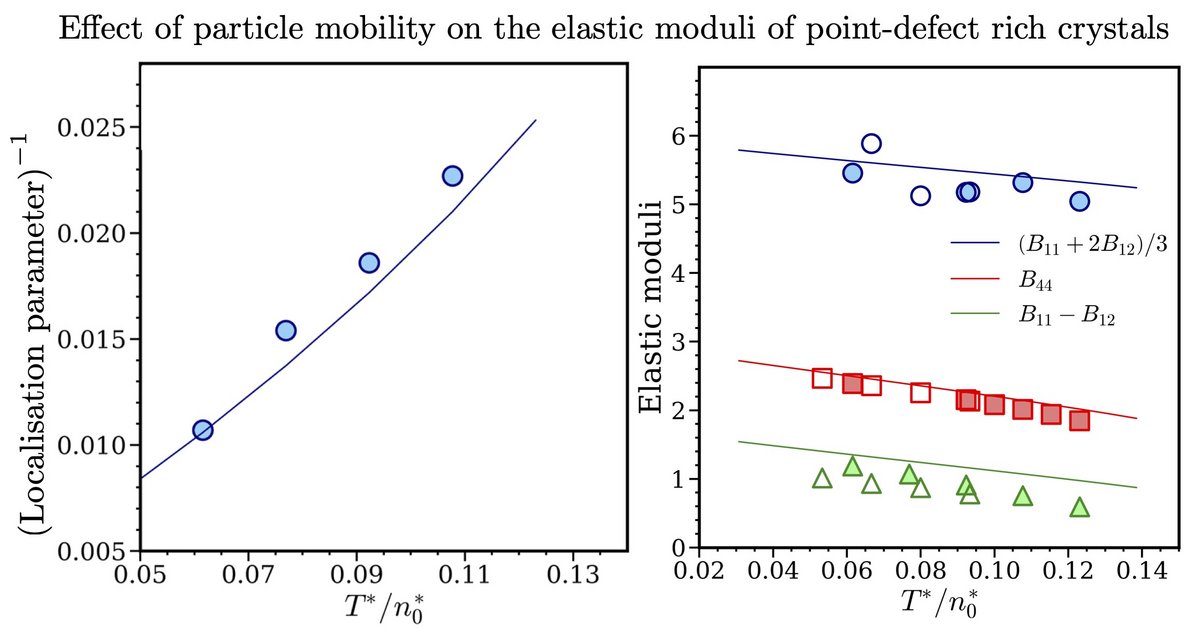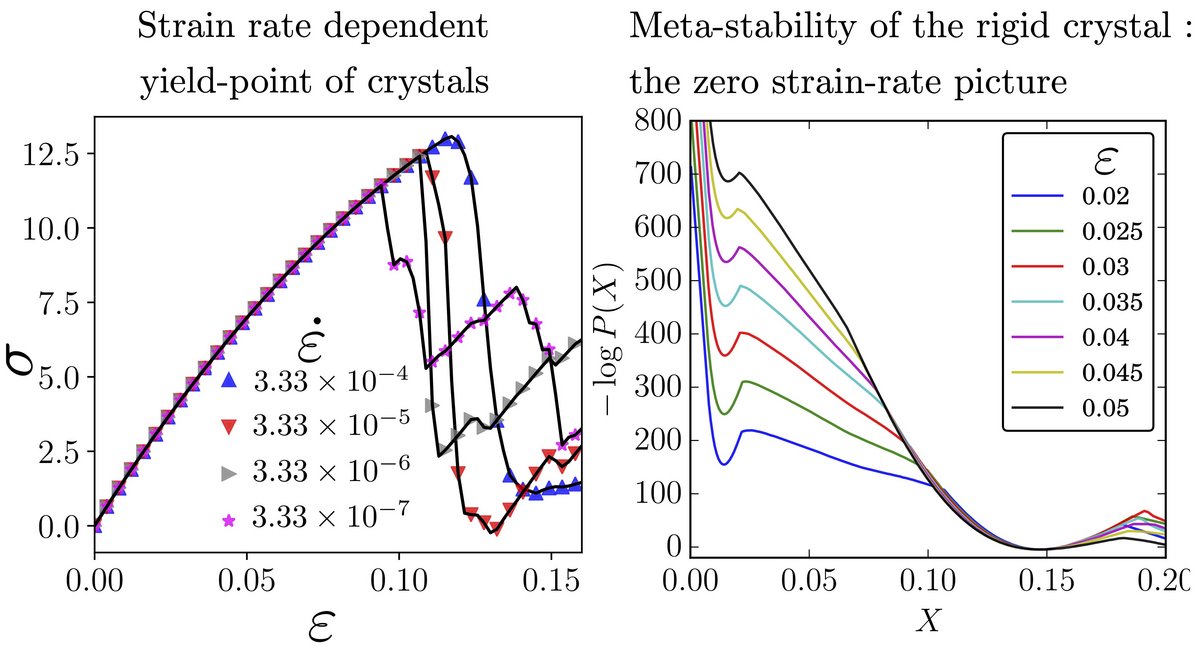Mechanical response in ordered solids: Statistical mechanics perspectives

Crystalline solids, on being deformed, are known to display an initial elastic response followed by the eventual onset of plasticity, marked by a clear departure from reversible elastic behaviour. Understanding this entire range of response in terms of the underlying microscopic details remains an active area of recent theoretical and experimental research.
With recent developments in confocal laser scanning microscopy, visualisation and even manipulation of the real-time particle dynamics in various kinds of crystalline solids have become realisable. However, tailoring bulk material properties through structural and kinetic interventions at atomic length-scales require information about precise connections between emergent macroscopic behaviour to microscopic distributions and correlations. We, in collaboration with groups at the University of Tübingen (Prof. Dr. Martin Oettel) and the Technical University of Vienna (Prof. Dr. Gerhard Kahl), developed a theoretical framework that allows us to follow the link between fields of macroscopic elasticity theory and the underlying microscopic density fluctuations. The importance of these theoretical insights [1] lies in the clear association presented between second order changes in thermodynamic free energies and the elastic fields derived from microscopic degrees of freedom in disorder dominated crystals interacting via ultra-shoft interaction potentials.
Another important but ill-understood property of a crystal is its yield-point. In typical experiments to measure mechanical response, crystals are subjected to a constant rate of deformation and the yield strain is identified as the cumulative strain at which the crystal shows a sudden relaxation in the stress response. The strain-rate dependence of the yield-point of an ideal crystal can be explained [2] in terms of an underlying equilibrium phase transition between the uniformly stressed and the stress relaxed crystal. We attempt to extend this concept to non-ideal crystalline solids, rich in point-defects. These studies provide the possibility of understanding the role of different kinds of defects during the yielding process.
[1]S. Ganguly, G. P. Shrivastav, S-C Lin, J. Häring, R. Haussmann, G. Kahl, M. Oettel and M. Fuchs, J. Chem. Phys. 156, 064501 (2022).
[2] P. Nath, S. Ganguly, J. Horbach, P. Sollich, S. Karmakar and S. Sengupta, Proc. Natl. Acad. Sci. U. S. A. 115, E4322 (2018).

